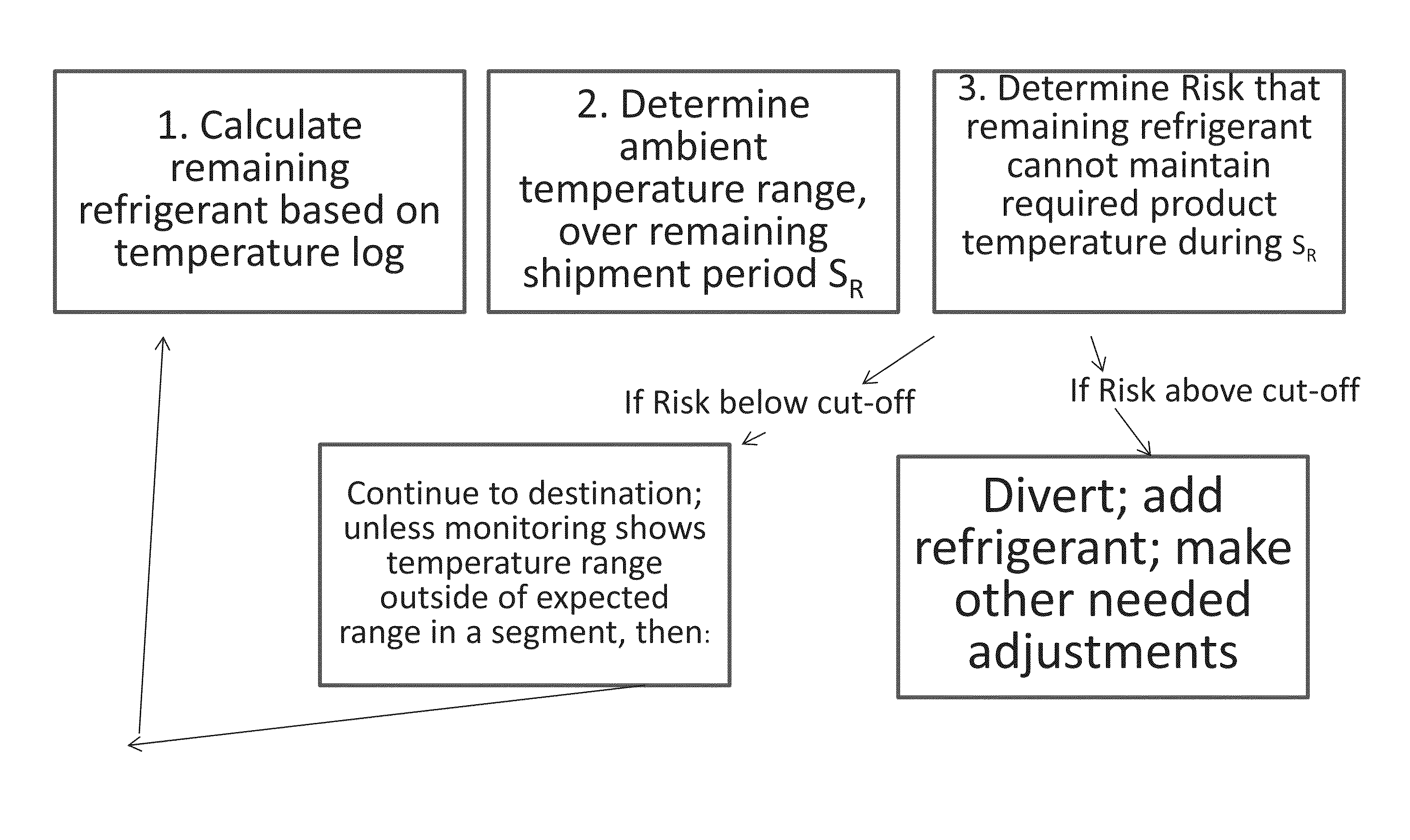Monitoring temperature-sensitive cargo with automated generation of regulatory qualification
a technology of temperature-sensitive cargo and automated generation, applied in the field of monitoring shipment, can solve the problems of only estimating the time in the shipment, unable to meet the requirements of medical use, and blood and perishable biological materials are problematic to be shipped, so as to increase the practicality of diverting the shipment, and shorten the effective life of the product
- Summary
- Abstract
- Description
- Claims
- Application Information
AI Technical Summary
Benefits of technology
Problems solved by technology
Method used
Image
Examples
Embodiment Construction
Goals and Qualification of Shipment System
[0023]Monitoring temperatures over time periods during shipment can be done with one of several commercial systems, including the Escort iMini™, the REDi Wireless™, and the Wireless Mini™, all made by Escort Dataloggers, Inc. (Buchanan, Va.). Data from these monitors can be viewed and plotted using the ESCORT Chartreader™. For the real time monitoring suitable for use with the systems herein (though not required for most systems), both the REDi Wireless™, and the Wireless Mini™ are suitable, as the data can be read or downloaded remotely.
[0024]To carry out the second embodiment without real time monitoring using RF or wireless transmission, the time / temperature logger shipped further needs a coding function to identify the materials shipped (for example, using a bar code) and data in the form of a certificate coded to the materials and operatively associated with the logger to authenticate the time / temperature log. For the second embodiment,...
PUM
 Login to View More
Login to View More Abstract
Description
Claims
Application Information
 Login to View More
Login to View More - R&D
- Intellectual Property
- Life Sciences
- Materials
- Tech Scout
- Unparalleled Data Quality
- Higher Quality Content
- 60% Fewer Hallucinations
Browse by: Latest US Patents, China's latest patents, Technical Efficacy Thesaurus, Application Domain, Technology Topic, Popular Technical Reports.
© 2025 PatSnap. All rights reserved.Legal|Privacy policy|Modern Slavery Act Transparency Statement|Sitemap|About US| Contact US: help@patsnap.com



